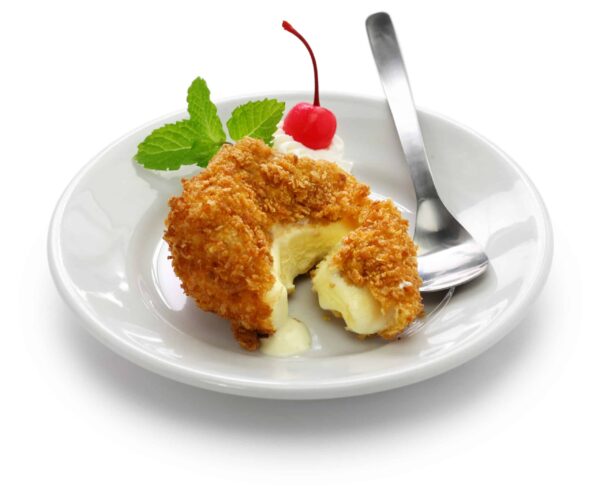If you’ve ever had the pleasure of trying fried ice cream, you may have also come across the question of how it’s made and how it doesn’t actually melt. At first glance, it may seem as if the heat from the frying would cause the ice cream to melt. However, there are a few reasons as to why this doesn’t happen! This month at Los Primos, we’re here to unravel the mystery and answer those questions for you!
How it Begins
There are a few steps to check off before the ice cream actually goes through the frying process. The ice cream, typically vanilla, is formed into a ball and then deep-freezed to ensure that it’s hard and frozen enough to withstand the frying process. The intense cold temperature also helps to preserve its shape!
After freezing, it’s coated in a mixture of egg whites and cornflakes. This layer acts as a barrier to insulate the ice cream from the intense heat of the oil.
The Frying Process
The frying process is very quick, typically lasting only a few seconds. The high temperature of the oil quickly crisps the coating but doesn’t give enough time for the heat to penetrate the ice cream deeply. This means that the ice cream remains frozen on the inside, even as the coating turns crispy on the outside.
The Science Behind it
You might still be left wondering still how the ice cream doesn’t melt if it has to endure all that heat from the oil, even for just a few seconds! Well, there’s a high water content in ice cream, which actually means it has a high heat capacity. This means that it requires a lot of heat to melt.
Visit Los Primos for Some Fried Ice Cream!
We hope we answered your questions regarding the mystery of one of our favorite desserts. If you’re looking to try fried ice cream, then you’ll be delighted to find out you can find it on our menu, along with so many other delicious options! Whether you’re looking for a sweet treat or a savory meal, we can’t wait to see you at Los Primos!



